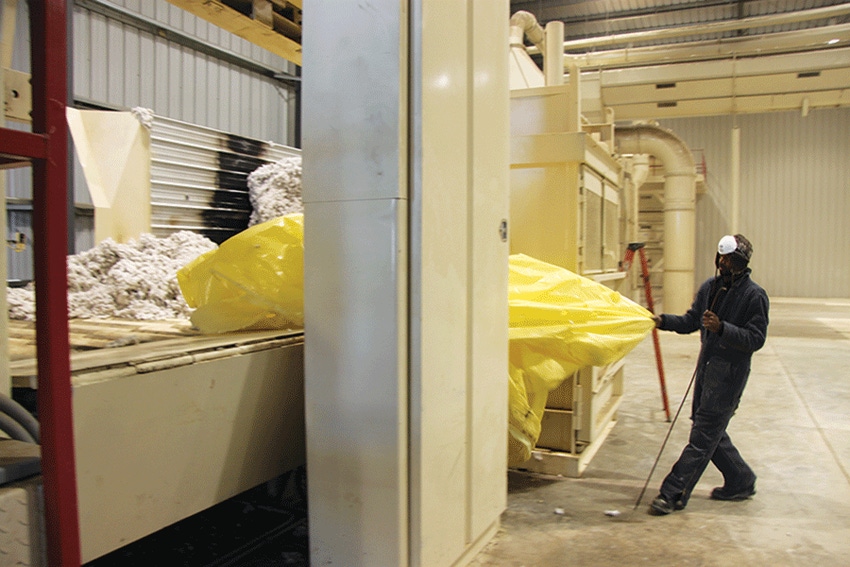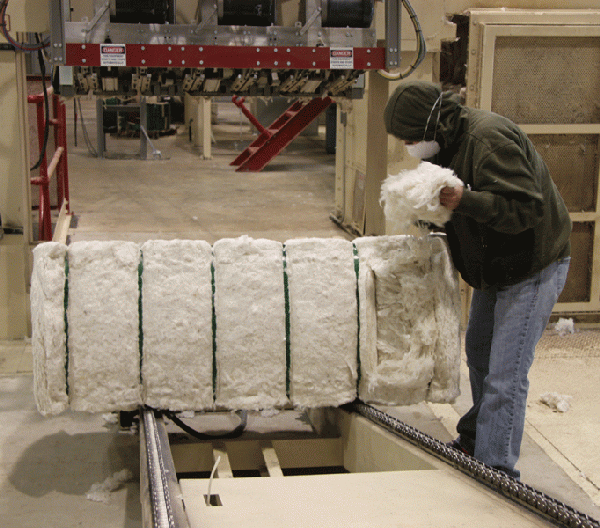
Cotton contamination, regulatory issues rank among concerns for ginners
If plastic is present in seed cotton, “it is highly likely a small amount of that plastic will find its way to the bale — no matter how much of it is removed by the gin machinery. The best defense continues to be making sure contaminants don’t get into the seed cotton.”

Plastic — whether bags from the supermarket or from on-farm sources — continues to be a thorn in the side of the U.S. cotton industry.

RON CRAFT
RON CRAFT“We are very concerned that our reputation for having the cleanest cotton in the world could be seriously damaged if all forms of plastic contamination aren’t eliminated,” says Ron Craft, president of the National Cotton Ginners Association, who spoke at the annual meeting of the Southern Cotton Ginners Association at Memphis.
A fifth generation Texas farmer and ginner, he says while ginners and farmers “may be weary” of hearing about the contamination issue, “we have to use all resources available to continue to try and eliminate all forms of contamination and maintain our reputation for top quality cotton.”
IT’S FREE! Stay informed on what’s happening in Mid-South agriculture: Subscribe to Delta Farm Press Daily.
He cited a research paper at the New Orleans Beltwide Cotton Conferences showing that if plastic is present in seed cotton, “it is highly likely a small amount of that plastic will find its way to the bale — no matter how much of it is removed by the gin machinery.
“All three of the USDA ginning laboratories have been studying various methods for detecting and removing plastic contaminants before they get too far along in the ginning process. We’re a long way from any of this research yielding a practical system for removing plastic at the gin. The best defense continues to be making sure contaminants don’t get into the seed cotton.”
In the past three years, Craft says, there has been a concentrated effort to train gin employees on the proper removal of wrapping on round modules. “There are a number of resources on the National Cotton Council website, and the National Cotton Ginners Association has a DVD that should be viewed by all gin employees who are involved in transporting, handling, or opening round modules.”
NCGA and its member ginner organizations continue to support research at the USDA ginning labs and Cotton Incorporated that addresses quality issues and concerns, he says.
“At the most recent gin lab reviews, there were a number of cotton quality and gin efficiency priorities that were identified by ginners. They include leaf hairiness, seed coat fragments, seed size, and seed loss that can occur when ginning varieties with small seed. It’s apparent there is a need for better cooperation among ginners, equipment manufacturers, and seed breeders.”
OSHA noise citations at Texas gins
Other concerns, Craft says, are “increasing aggressiveness” by the Occupational Safety and Health Administration. “The assistant secretary for OSHA has indicated they will use the General Duty Clause with much greater frequency,” he says, and last year two Texas gins were cited under that clause for having excessive noise levels (greater than 90 decibels).

Although cotton gins are covered under the 1928 OSHA Agricultural Standard they are not subject to the noise standard, but last year two Texas gins were cited under the General Duty Clause for excessive noise levels.
Although cotton gins are covered under the 1928 OSHA Agricultural Standard they are not subject to the noise standard, but last year two Texas gins were cited under the General Duty Clause for excessive noise levels.Although cotton gins are covered under the 1928 OSHA Agricultural Standard, he says, they are not subject to the noise standard. “OSHA made an initial offer for the gin to accept mandatory ear plugs, which the gin rejected. The gin made a counter offer that it would train, encourage, advise, and inform employees about the importance of hearing protection. OSHA refused that offer.”
The issue is important to the ginning industry across the cotton belt, Craft says, because of technical issues that come into play.
“Cotton gins don’t operate on a year-round basis, so an employee’s noise exposure is only temporary, and noise levels are to be averaged over an 8 hour time-weighted average. Neither of these factors was likely considered.”
From a practical standpoint, Craft says, “When these citations occur and OSHA prevails, it sets a precedent that makes it much easier for them to apply that decision to other areas of the cotton belt. We all thought this case would ultimately wind up in the courts; witnesses had been deposed and a court date had been set. But happily, the case was settled and the gins and the Texas Ginners Association prevailed and are basically back to the gin’s original offer. They will provide earplugs for employee use, and at the beginning of each season will train employees on the hazards of excessive noise and the benefits of using hearing protection.”
Excessive overreach by OSHA
On the other hand, Craft says, “We’re not the least bit happy that the gins involved, and the Texas Ginners Association, spent tens of thousands of dollars fighting this excessive overreach by this particular OSHA area office. This case speaks volumes about the wide disparities between OSHA offices and how they interpret regulations.”
In Georgia last year, he says, a gin was cited by OSHA for combustible dust under the General Duty Clause. “Even though all our test data demonstrate that gins don’t have a combustible or explosive dust issue, the gin, which wasn’t a member of a gin association, paid the citation.”
Ginners “should never sign any kind of agreement or settlement with OSHA,” Craft says, “until they have contacted their ginner association or NCGA or someone knowledgeable about OSHA regulations related to agriculture.”

A newly-designed logo is now being used on bale packaging by many U.S. cotton gins.
A newly-designed logo is now being used on bale packaging by many U.S. cotton gins.An exclusive logo by Cotton Council International has been designed and approved for use on U.S. cotton bales, he says. “Several major suppliers of packaging materials have been granted license to use the logo, and many gins used it on their bale packaging in the 2015 ginning season. We appreciate all the gins that used it, and hope others will consider using the logo in their bale packaging this year to help us promote cotton grown and ginned in the U.S.”
A total of 248 students participated in the three ginner certification schools last year, Craft says. “It’s vital that today’s gin employees are well-trained, and we’re confident that our schools are fulfilling the need for competent workers.”
To achieve certification, a participant must have a minimum of three years experience working in a commercial ginning operation; complete all three levels of instruction at the gin school; satisfactorily complete a comprehensive written exam on the practical aspects of gin operation; have an established ginner’s written recommendation detailing the applicant’s knowledge, skill, experience, and character; be certified in Red Cross Standard or other OSHA-approved first aid; and to remain in good standing, must complete a minimum of 12 hours of continuing education course credits over any three-year period.
Four Mid-South ginners who received certification last year were Ethan Dahlem and Hunter Dahlem, Bogue Chitto Gin, Macon, Miss.; Joe Matthews, Cowart Gin, Charleston, Miss.; and Gregorio Cavazos, Farmers Union Gin, Senath, Mo.
About the Author(s)
You May Also Like



